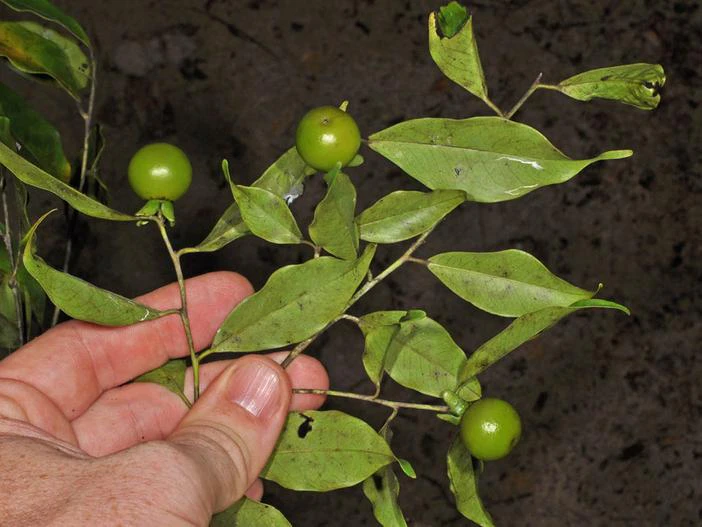Velvet Apple
(Diospyros multiflora)
Velvet Apple (Diospyros multiflora)
/
/

Edward Steven
CC BY-SA 2.0
Image By:
Edward Steven
Recorded By:
Copyright:
CC BY-SA 2.0
Copyright Notice:
Photo by: Edward Steven | License Type: CC BY-SA 2.0 | License URL: https://creativecommons.org/licenses/by-sa/2.0/ | Uploader: Edward_Steven | Publisher: Flickr



Estimated Native Range
Climate Requirements for Charleston, South Carolina
| This Plant | Your Site | Plant Suitability for Your Location | ||
|---|---|---|---|---|
| • Precipitation | 73" - 98" | 50" | Aquatic | Aquatic |
| • High Temp. | 83°F - 94°F | 91°F | Your summer temperatures are normal for this plant. | Excellent |
| • Low Temp. | 67°F - 75°F | 39°F | Your winter temperatures may be too cold for this plant | Too cold |
This plant should grow well at your location with about N inches per year (Y minutes per month) of irrigation.
Summary
Diospyros multiflora, commonly known as Velvet Apple, Mabolo, or Kamagong, is a tropical evergreen tree native to the Philippines and Southeast Asia. It thrives in a variety of habitats including primary and secondary forests, often in lowland areas but also on limestone hills and lower montane regions. This species can grow at a moderate rate to a height of 33-66 feet (10-20 meters) and is known for its dense, dark green foliage and spreading canopy. The flowers are inconspicuous, with yellow or cream blooms appearing in the spring and summer. The fruit is notable for its velvety texture and sweet flavor, which is enjoyed by both humans and wildlife.
Velvet Apple trees are valued for their edible fruit, ornamental appeal, and the hard, dark wood, which is used in fine cabinetry and traditional crafts. They are suitable for planting in tropical and subtropical gardens, where they can serve as shade trees or be grown for fruit production. In cultivation, they require full sun to partial shade, medium amounts of water, and well-draining loam or clay soils. While they are not commonly found in cultivation outside their native range, they can be grown in greenhouses or conservatories in cooler climates. Potential problems include pests such as fruit flies and diseases like leaf spot, but these are generally manageable with proper care.CC BY-SA 4.0
Velvet Apple trees are valued for their edible fruit, ornamental appeal, and the hard, dark wood, which is used in fine cabinetry and traditional crafts. They are suitable for planting in tropical and subtropical gardens, where they can serve as shade trees or be grown for fruit production. In cultivation, they require full sun to partial shade, medium amounts of water, and well-draining loam or clay soils. While they are not commonly found in cultivation outside their native range, they can be grown in greenhouses or conservatories in cooler climates. Potential problems include pests such as fruit flies and diseases like leaf spot, but these are generally manageable with proper care.CC BY-SA 4.0
Plant Description
- Plant Type: Tree
- Height: 33-66 feet
- Width: 20-30 feet
- Growth Rate: Moderate
- Flower Color: Yellow, Cream
- Flowering Season: Spring, Summer
- Leaf Retention: Evergreen
Growth Requirements
- Sun: Full Sun
- Water: Medium
- Drainage: Medium, Fast
Common Uses
Edible*Disclaimer: Easyscape's listed plant edibility is for informational use. Always verify the safety and proper identification of any plant before consumption., Fragrant, Low Maintenance
Natural Habitat
Primary and secondary forests, limestone hills, and lower montane regions
Other Names
Common Names: Kamagong, Velvet Apple
Scientific Names: Diospyros multiflora, Diospyros canomoi, Diospyros lotus, Diospyros phanerophlebia
GBIF Accepted Name: Diospyros multiflora